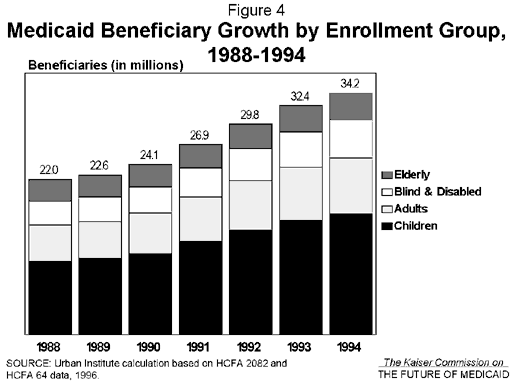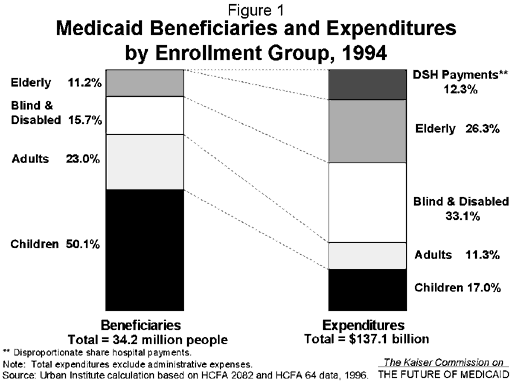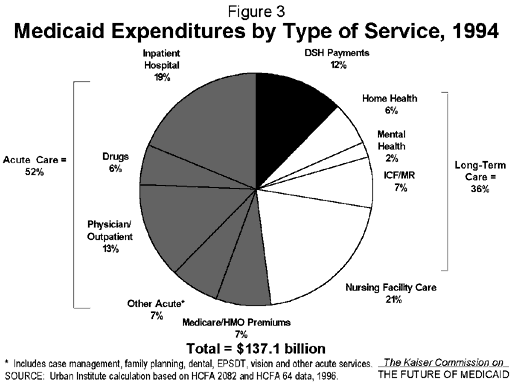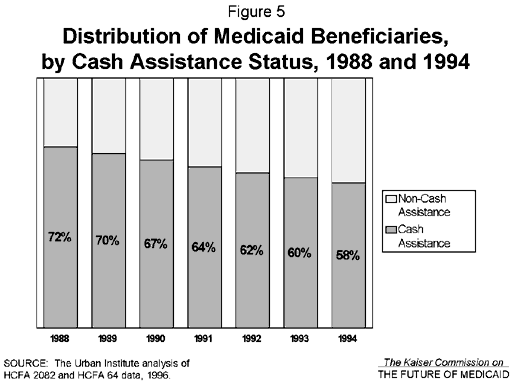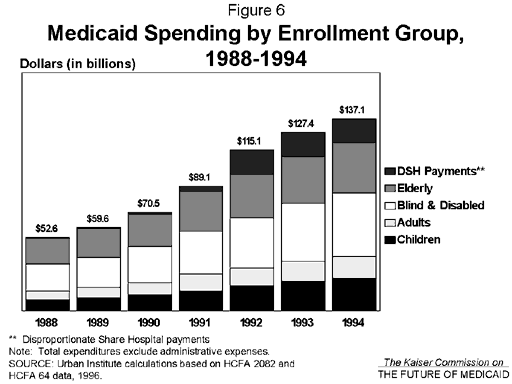Kaiser/Harvard National Survey of Americans’ Views on Managed Care
Is There A Managed Care “Backlash?”
Embargoed for release: 9:30 a.m. ET, Wednesday, November 5, 1997
For further information contact: Matt James or Tina Hoff
Most Americans Give Their Own Health Plan A Good Grade, But Have Concerns About Key Aspects Of Managed Care
Washington, DC — At a time of expanding enrollment and stricter federal and state regulation, how does the public feel about managed care? Most insured Americans — regardless of whether they have managed care or traditional coverage — give their own health plan a letter grade of “B” or higher. However, majorities of the public also say they are concerned about key aspects of managed health care. According to a new national survey by the Kaiser Family Foundation and Harvard University:
- A majority of Americans (59%) say managed care plans have made it harder for people who are sick to see medical specialists (25% say easier);
- Half (51%) say managed care has decreased the quality of care for people who are sick (32% say increased);
- Three out of five (61%) say managed care has reduced the amount of time doctors spend with patients (16% say increased);
- A majority of people in managed care — 55 percent — say they are at least “somewhat worried” that if they were sick their “health plan would be more concerned about saving money than about what is the best medical treatment;” 34 percent of those with traditional health insurance coverage feel this way.
One area where managed care does come out on top is preventive care: nearly half (46%) of people say managed care has made it easier to get services such as immunizations, health screenings, and physical exams (31% say harder).
The survey also found that people seem to generalize from anecdotal reports in the news about problems with managed care. When asked about specific examples taken from news stories about the problems some people have reported to have had with managed care, the public’s perception is that these are fairly common occurrences. For example, two thirds of Americans believe that a Health Maintenance Organization (HMO) holding back on a child’s cancer treatment is something that happens “often” (26%) or “sometimes” (40%). Two out of five (39%) think newborn babies being sent home after just one day because of a managed care plan’s policy, in spite of mothers’ concerns, happens “often;” an additional third (34%) think this occurs at least “sometimes.”
“Managed care is winning in the health care marketplace, but it is in danger of losing the battle for public opinion,” said Drew E. Altman, Ph.D., President, Kaiser Family Foundation.
More people — 34 percent — think managed care health plans do a “good job” in serving health care consumers than think do a “bad job” (21%). However, overall, other health care groups are viewed far more favorably than managed care health plans: solid majorities of Americans think nurses (83%), doctors (69%), hospitals (61%), and pharmaceutical companies (62%) generally do a “good job.” For many people, though, the jury is simply still out: 32 percent have no opinion about the kind of job managed care health plans are doing.
Who Benefits from Managed Care Savings?
Many people perceive the cost savings from managed care as benefiting both employers (56%) and individuals (49%), but it is the health insurance companies themselves that most (72%) say reap the rewards in the form of greater profits. Few Americans believe the trend to managed care has had a significant impact on the overall cost of health care in this country, with most — 55 percent — saying they don’t see that it has made much of a difference; 28 percent say it has helped bring down costs.
Should Managed Care Be Regulated?
In recent weeks, the push for regulation of managed care has intensified with some industry leaders now calling for “legally enforceable national standards.” The President’s Advisory Committee on Consumer Protection and Quality in the Health Care Industry is also expected to soon release a “consumer bill of rights.” A slight majority of Americans — 52 percent — say the government should protect consumers of managed care; 40 percent say such intervention is not worth the increased costs that would result. When asked who they would “most like to see managed care plans regulated by,” the public is divided over whether the government — federal (19%) or state (18%) — or an independent organization (34%) should regulate the industry. Sixteen percent (16%) maintain that managed care plans should not be regulated at all.
Managed … What?
Few Americans are familiar with some of the key terms used in debates over health care policy. A sizeable percentage of people — 28 percent — have never heard of “managed care” (45% know what it means; 26% have heard of it but are not sure what it means). “Fee-for-service” is even less recognized: while 41 percent say they know what it means, 43 percent say they have never heard the term (15% have heard of it but are not sure what it means). HMOs are more familiar: 62 percent say they know what it means (24% have heard of but are not sure what it means, and 14% have never heard the term).
Comparing the Views of Managed Care Enrollees with People in Traditional Health Plans
People in managed care are more worried than those with traditional coverage when it comes to the perceived motivations of their health plans. Insured respondents under 65 in this survey were grouped into three categories based on their health care coverage: “heavy” managed care, reflecting the most restrictive arrangements; “light” managed care, reflecting less restrictive arrangements; and “traditional” fee-for-service plans. Three out of five people (61%) in “heavy” managed care say they would be at least “somewhat worried” that their health plan would be more concerned about saving money than providing the best treatment option if they were sick. Fifty-one percent (51%) of those in “light” managed care agree. By comparison, 34 percent of those with traditional coverage report a similar anxiety; 62 percent say they would not be overly worried that cost might affect medical care.
“People in managed care are much more anxious than those in traditional plans about whether or not their insurance plan will pay for what they need when they are sick,” said Robert J. Blendon, Sc.D., Professor of Health Policy at Harvard University. “Members appear satisfied with their plans today, but are concerned about what might happen to them in the future.”
While most insured Americans say they trust their health plan to do the right thing at least “most of the time,” those in traditional health plans have a greater degree of confidence than those in managed care that this is “just about always” the case (55% in traditional plans vs. 30% in “heavy” and 31% in “light” managed care).
Managed care enrollees are more likely to have cost concerns than those in traditional fee-for-service plans. While 69 percent of people in traditional health insurance say they think it would be “very likely” that their plan would cover most of the cost of serious illness, by comparison 44 percent of those in “heavy” and 54% in “light” managed care are equally sure their plan would pay. Similarly, three quarters (78%) of those with a traditional plan say it is “very likely” that a visit to the emergency room would be covered, while fewer of those in managed care (56% in “heavy” and 63% in “light”) are as confident their plan would pay.
While managed care enrollees appear more anxious about their health plan than those with traditional health care coverage, people with all types of insurance coverage grade their plans generally favorably. Twenty percent (20%) of those with “heavy” managed care give their plan a letter grade of “A,” 44 percent give a “B;” about the same percentages given by those with “light” managed care (“A” 24%, and “B” 44%). Slightly more people with traditional health insurance give an “A” (33%), and 43 percent give a “B.”
How Type of Health Care Coverage was Determined.
Because many people are unsure — or don’t know — what kind of health insurance they have, insured respondents under 65 in this survey (778 respondents) were asked a series of questions about their health plan to establish what kind of coverage they have. They were asked if they were required to do any of the following by their plan: choose doctors from a list and pay more for doctors not on the list; select a primary care doctor or medical group; and/or obtain a referral before seeing a medical specialist or a doctor outside of the plan. Respondents were listed as being in “heavy” managed care if they reported their plans had all of the characteristics described above (34% of the sample). Respondents were listed as being in “light” managed care if they reported their plans had some but not all of the characteristics listed above (45% of the sample). And, respondents were listed as having “traditional” insurance if they reported their plans as having none of the characteristics (21% of the sample).
Shaping Public Opinion: Personal Experience, Family, Friends, and the Media
People say that their feelings about managed care — favorable as well as unfavorable — are more likely to be based on personal experiences and what they have heard from family members and friends than on media coverage. Two thirds of those who say they think managed care plans generally do a “bad job” serving consumers report that the main reason they feel this way is their own experience (39%) or what they have heard from family or friends (32%). Similar percentages of people who think managed care is doing a “good job” say the same thing (35% say own experience, 32% say family or friends). About a quarter say media coverage of managed care has most influenced their views. Those with unfavorable impressions of managed care are again as likely to cite the media (22%) as those with more favorable opinions (24%).
Media coverage of HMOs or managed care is largely seen by the public as “fair” (54%) and as including a mix of favorable and unfavorable stories (57%). Most people — 56 percent — say they have personally seen at least “some” media coverage about managed care in the past year.
Methodology
The Kaiser/Harvard National Survey of Americans’ Views on Managed Care is a product of the Kaiser-Harvard Program on the Public and Health/Social Policy. It was designed and analyzed by researchers at the Kaiser Family Foundation and Harvard University. The survey was conducted by telephone by Princeton Survey Research Associates with 1,204 adults nationwide between August 22 and September 23, 1997. The margin of error is plus or minus 3 percent for the national sample.
The Kaiser Family Foundation, based in Menlo Park, California, is a non-profit, independent national health care philanthropy and is not associated with Kaiser Permanente or Kaiser Industries. The Foundation’s work is focused on four main areas: health policy, reproductive health, and HIV policy in the United States, and health and development in South Africa.
National Election Night Survey of VotersPress Release Survey Chart Pack
